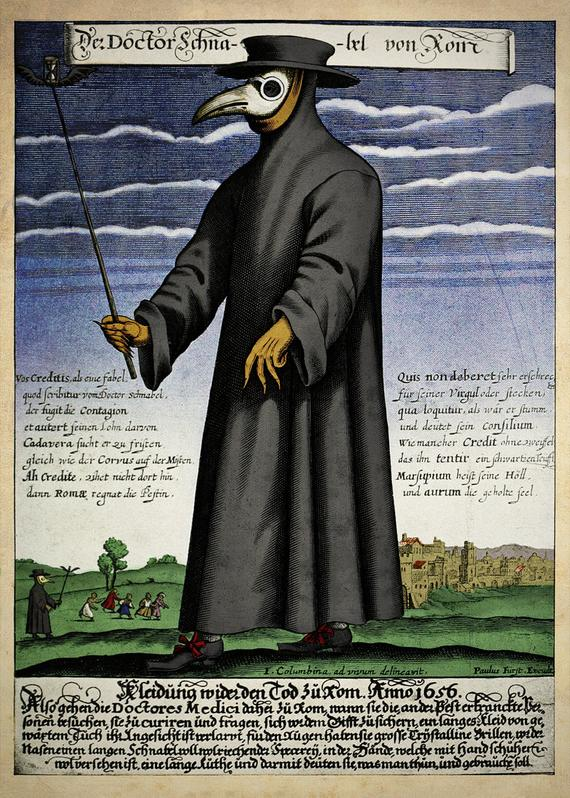Doctor Plague – Grave of plague victims, Lublin
Fact of the Polish figure „Plague image in Culture”
Part of the „Pandemics” topic
Kingdom of Poland was rather mildly affected by the Black Death in the mid-14th century, although the plague returned few times – especially during the Great Northern War, due to the march of Swedish troops through the territory of the Commonwealth. The fight against the plague was made more difficult because of the contributions collected by armies from towns, still the attempts were made to apply basic preventive measures. However, contrary to widespread belief, the famous plague doctor mask was not particularly popular in this part of the Old Continent. While in the present times it’s instantly recognizable around the world, the costume was most prevalent in today’s Italy and France. Similarly to the plague doctors, perceived as a sign of looming danger, gravediggers also didn’t have the best reputation. Sometimes they were accused of deliberately spreading the disease in order to ensure a steady source of income: one of the most famous trials took place in Lublin in 1711.
Further reading:
Frandsen Karl-Erik, The Last Plague in the Baltic Region: 1709-1713 (2010), Copenhagen.
Ruisinger M. M., The ,,Plague Doctor’s Mask” in the German Museum for the History of Medicine, Ingolstadt, ,,NTM Zeitschrift für Geschichte der Wissenschaften, Technik und Medizin” (2020), V. 28, p. 235-252.
Wyrobisz A., Misericordia pestis tempore. Attitudes and Behaviour During Pestilences in Early Modern Poland (16th-18th Centuries), ,,Acta Poloniae Historica” (2000), V. 81, p. 165-181.





